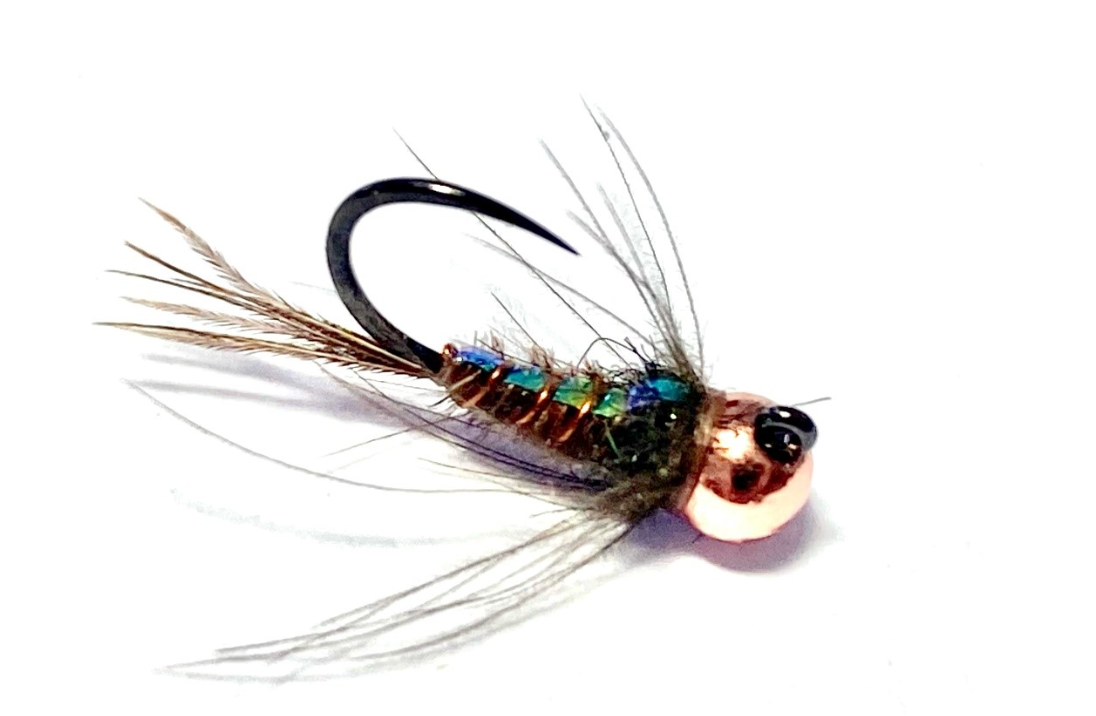
Euro Nymphing Part 1: The Anatomy of a Euro Nymph

Photo Credit: Niklas Dahlin
Over the last several years I’ve begun hearing variations of this story more and more often as excited anglers come into the shop. It usually goes something like this, “I was watching this gal/guy fishing downstream from me and they were pulling fish after fish out of the water! They must have caught 10/15/20 fish to every one fish I netted!” Overcoming their awe these inspired anglers eventually approach the fly-fishing Jedi and learn that they are Euro Nymphing. Also known as Czech Nymphing, or Tight Line Nymphing this stripped down, simple approach to nymphing is used almost exclusively in the competition fly fishing circuit. This technique is preferred by professional anglers and those “in the know” because it’s unique ability to get one’s flies to the bottom of the river and in front of the fish faster than any other technique all the while maintain a live wire like sensitivity to every subtle bounce and bite.
This article will be the first of a multi-part series breaking down the unique flies, gear, and technique used in Euro Nymphing. It can be intimidating to take off the dry flies and indicators that we’ve been grown up fishing, but trust me, Euro Nymphing is not difficult to master and adding this technique to your fishing repertoire WILL exponentially increase your catch rate!
In this article we are going to start by breaking down the unique anatomy and features of the euro nymph that makes it both so unique and deadly!
The Key is Heavy Metal

The key to the euro nymph is packing as much weight as possible into the fly so that when fished it rapidly sinks to the bottom of the river, and pulls the leader tight in spite of the current. Fished without a strike indicator or slit shot, this vital weight is found in a tungsten beadhead and wraps of lead tied wire tied around the shank of the hook. By comparison, tungsten is 2x as dense as brass and 1.5x as heavy as lead. While these heavy metal nymphs can certainly be a great addition to an indicator or dry-dropper rig, they are essential to the euro nymphing rig. When euro nymphing the key is to go bigger, go heavier, and add more heavy metal!
Getin’ Jiggy Wit’ It
You read that right! I just made a reference to Will Smith’s 1997 hit song “Getin’ Jiggy Wit’ it” and if you don’t like it Smith will smack you like Chris Rock at the Oscars! While many euro nymph patterns are tied to traditional nymph hooks, the new wave of euro patterns are tied to jig hooks with wide hook gaps. The jig hook changes the orientation of the fly, directing the point of the hook towards the surface of the water instead of the snag covered bottom of the river. This orientation towards the surface enables these unique patterns to bounce and drift between rock and in front of the fish as the hold and feed along the bottom of the river, while the wide gap between the point and shank of the hook ensures that the flies bite back and will grab and hold onto a larger piece of meat than your standard nymph hook.

Swing with Motion & Flash
The vast majority of euro nymph patterns don’t attempt to closely imitate specific hatches but are in large part flashy, highly active attractor patterns capitalizing instead on their looks to seduce a strike from trout. Bright colors, fluorescents, wire wraps, metallic sparks of light cast from beadheads and flashbacks, and the realistic flowing of insect legs and tails created by wraps of soft hackle and CDC are the norm for the most productive euro nymphs in the fly box.

These heavy metal, sexy bombers are the apex predators in the fly fishing ecosystem! If you aren’t convinced to of the appeal and high functionality of euro nymphs, try tying some on your next trip to the river and let your fish count convince you!
Fly of the Month Pattern
Name: Czechmate
Sizes: 14 – 18

Tied in the traditional Czech Nymph style, our Czech Mate pattern sports a tungsten bead buried inside of its head to get this fly down deep where trout like to lay along the bottom of the river. Tied to a curved scud hook, the Czech Mate is intended to roll along the bottom of the river, while additional flies tied higher up the leader do the bulk of the fish-catching work. Drifting deep = more fish!
This fly is perfect for use in either a Euro-Style/Czech Nymphing or Standard Nymphing rig.
Dry/Wet: Wet
Fly Category: Attractor Pattern
Family: Caddis Fly
Species: NA
Life Stage: Larva


